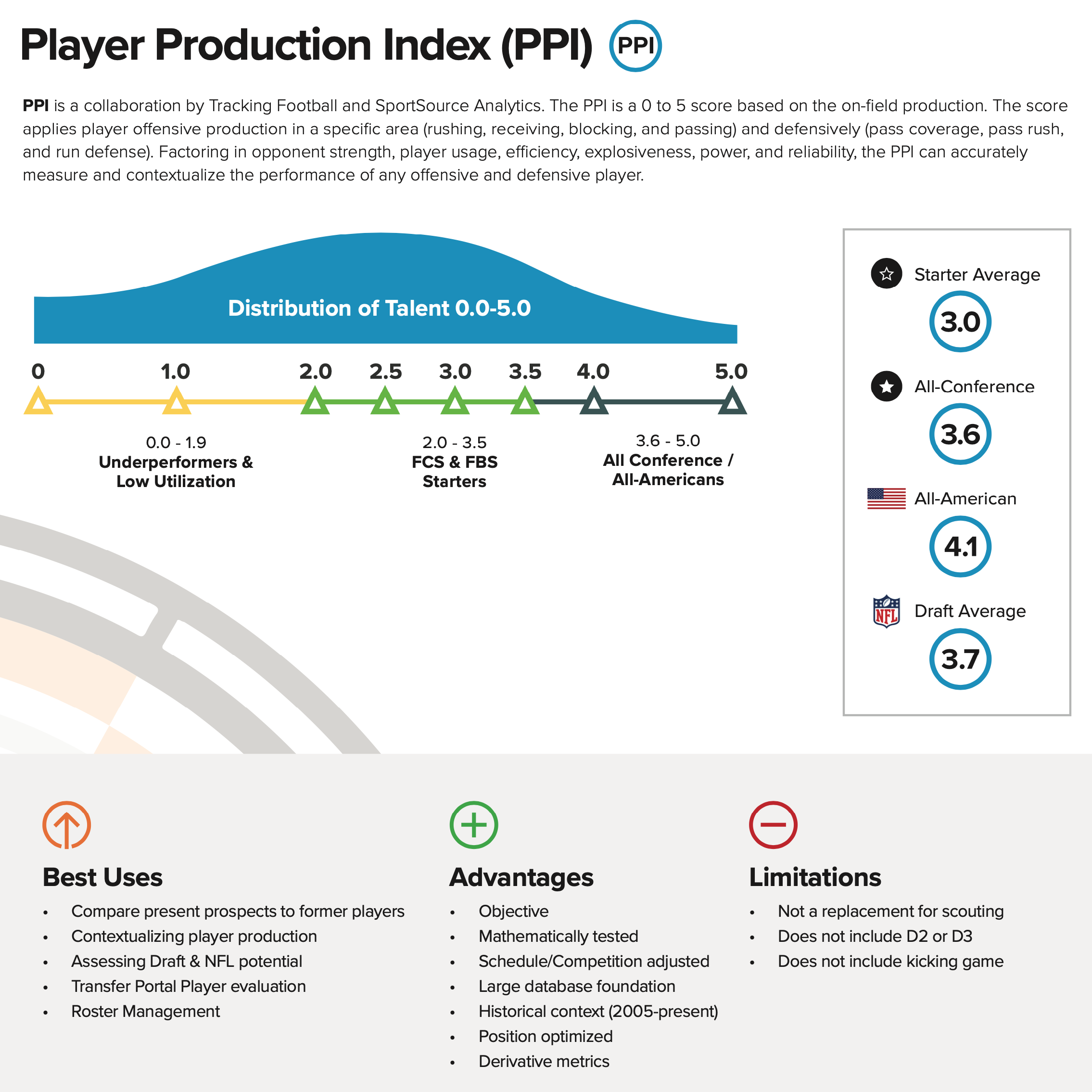Background
Below is a quick summary of Player Production Index and how it should be used as an evaluative metric for players.

Critical Factors in the Overall PPI
A player’s Overall PPI is calculated based on how the player statistically contributes on the field. The image below is an outline of all of the critical factors and sub-PPI scores we measure in each production aspect of the game. All of these small scores and factors are rolled up into the Overall PPI.

Frequently Asked Questions
How often are PPI scores released?
- Initial PPI scores for the current season will be released around Week 4 or Week 5, then bi-weekly after that through the end of the season. At a high level, since these are opponent-adjusted yearly scores (not weekly grades), we generally like to see reasonable sample sizes before we release the initial scores.
Why are some of these scores really high for players that are not that good?
- The PPI is qualitative and not overly quantitative in nature. Players with limited playing time, especially early in the season, can frequently have high scores due to limited opportunity. This is especially true with defensive backs and rotational players. Generally, over the course of an entire season, these begin to level out. Our goal is to qualitatively measure their production with the best data that is available, not provide quantitive measurements. If you want raw production counts (most yards, most tackles, etc), player stats in our Player Rankings are available. The PPI measures how well a player performed with the opportunity they had, whether it is 50 snaps or 500 snaps.
Are FBS and FCS Overall PPI scores measured differently?
- They both use all of the same critical factors and sub-PPI areas, however, they are contextually very different. All PPI scores are relative to the division (FBS or FCS) and opponent-adjusted to their schedule. This means a 4.8 Overall PPI score for an FCS player is not the same as a 4.8 Overall PPI score for an FBS player. FBS is a much more difficult division and the scores, while on the same 0.0 to 5.0 scale, are not simply translatable.
Does it matter if a player is only playing in garbage time?
- While a lot of subjective player scores do not reward player performance during non-critical portions of the game, the PPI absolutely does. PPI is a completely objective evaluative. Every snap counts.
How does the PPI compare to other evaluative metrics like PFF Grades?
- One of the important use cases for the PPI score is college scouting. We are not measuring subjective value or “importance” of a player. We are qualitatively measuring production. We believe the nature of the PPI supplements (not replaces) subjective grading and scouting. To quote Billy Beane, GM of the Oakland A’s, “If he’s such a good hitter, then why doesn’t he hit good?”. In many ways, the PPI behaves more like a batting average than a “grade”. This is why many scores early and during the season, can start high and then typically taper off. In many cases, the PPI will be in-line with subjective grading systems (like PFF), in some cases, it will not.
